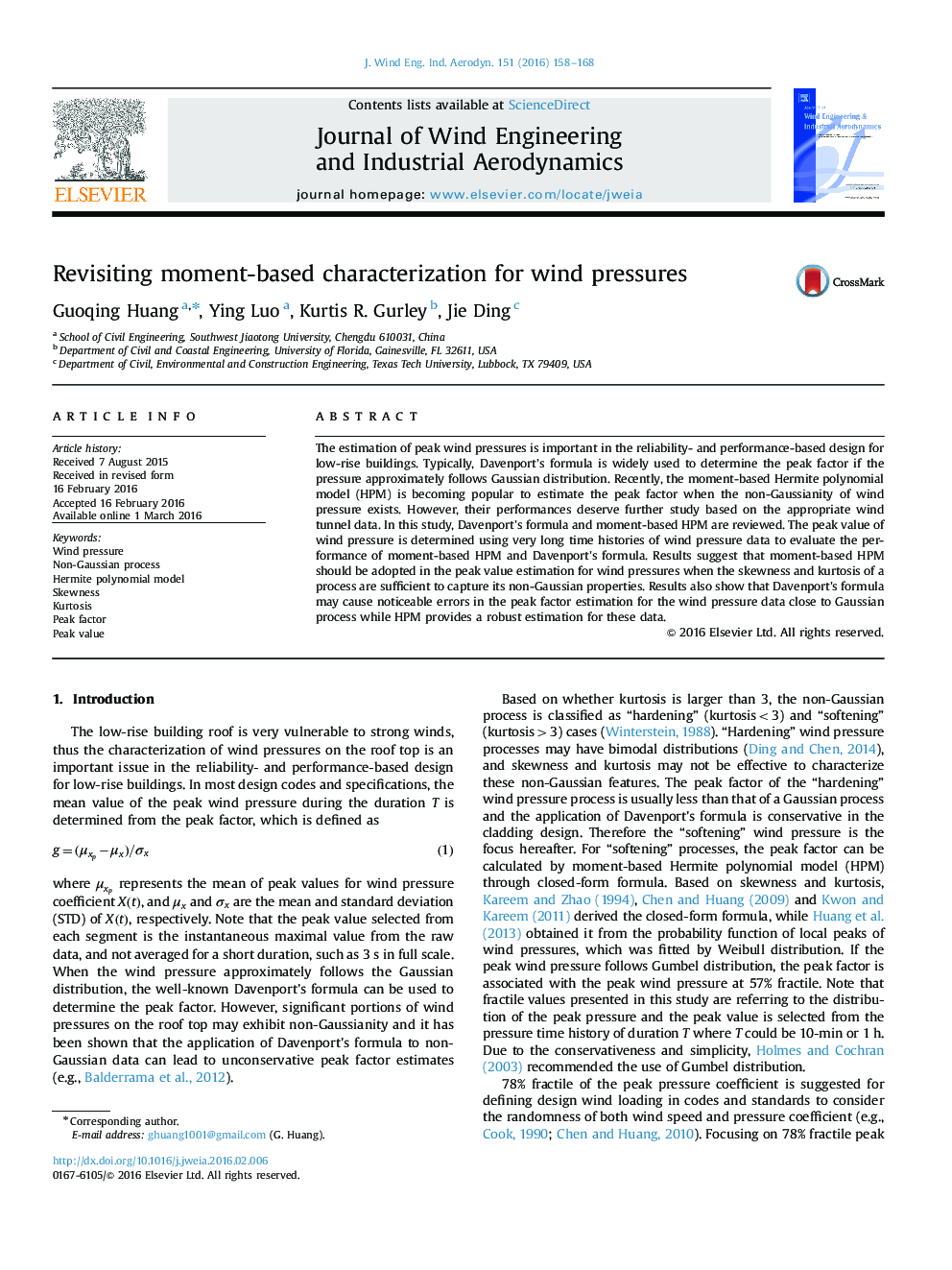| Article ID | Journal | Published Year | Pages | File Type |
|---|---|---|---|---|
| 292817 | Journal of Wind Engineering and Industrial Aerodynamics | 2016 | 11 Pages |
•Davenport’s formula (DF) and moment-based Hermite polynomial model (HPM) are evaluated via very long wind pressure data.•HPM should be used in the peak value estimation if the skewness and kurtosis are sufficient to capture its non-Gaussianity.•DF causes large errors in peak factor estimation for nearly Gaussian wind pressures while HPM provides a robust estimation.
The estimation of peak wind pressures is important in the reliability- and performance-based design for low-rise buildings. Typically, Davenport׳s formula is widely used to determine the peak factor if the pressure approximately follows Gaussian distribution. Recently, the moment-based Hermite polynomial model (HPM) is becoming popular to estimate the peak factor when the non-Gaussianity of wind pressure exists. However, their performances deserve further study based on the appropriate wind tunnel data. In this study, Davenport׳s formula and moment-based HPM are reviewed. The peak value of wind pressure is determined using very long time histories of wind pressure data to evaluate the performance of moment-based HPM and Davenport׳s formula. Results suggest that moment-based HPM should be adopted in the peak value estimation for wind pressures when the skewness and kurtosis of a process are sufficient to capture its non-Gaussian properties. Results also show that Davenport׳s formula may cause noticeable errors in the peak factor estimation for the wind pressure data close to Gaussian process while HPM provides a robust estimation for these data.
